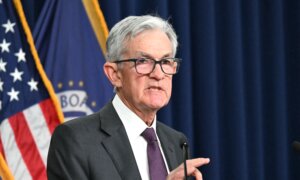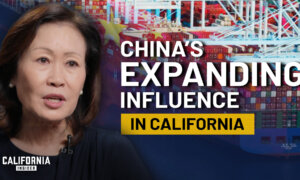Commentary
The best news last week was that the Conference Board reported that its consumer confidence index soared to 108.7 in October, up from 99.2 in October. This was the largest monthly surge in consumer confidence since March 2021. Apparently, Americans are deliriously happy the election is almost over. Since the market loves certainty, let’s hope for a clear and certain outcome in today’s election results.
Last week was a big week for earnings, as five of the Magnificent Seven stocks announced their earnings. So far, I am pleased with how most of the stocks reacted in the wake of their earnings reports. Although some stocks initially dipped on their positive reports, they and the S&P 500 recovered strongly on Friday, the first day of November, which historically has been the market’s strongest month.
Nvidia will replace Intel in the Dow Industrials, as Intel recently announced another round of layoffs and a third-quarter operating loss. Also, in an odd combination of indicators, the 10-year Treasury yield has risen 70 basis points in six weeks, closing at 4.36% last Friday, while the stock market has risen and the dollar has rallied, all while gold also soared to record highs, touching $2,800 last week. Usually, the dollar and gold move in opposite directions, but gold is likely rising now due to uncertainties.
Here are the most important market news items and what this news means:
- The bond vigilantes have been predicting a Trump victory for the past several weeks since Treasury yields have risen in anticipation of higher budget deficits and more robust economic growth. Ironically, many of the bond vigilantes are in Europe, where the “Trump trade” was initiated.
- You might be wondering, what does Europe know that maybe we do not know in the U.S.? Well, Europe has had a dramatic right-wing shift from the farmer protests that were caused by the European Union forcing farmers to comply with the Paris Climate Accord. The primary reason that farmers all over Europe were protesting is that it was hard for them to make money under the Paris Climate Accord rules, plus they could not compete against imported crops from countries that did not comply with such archaic rules.
- The EV transition in Europe is also hurting automotive manufacturers, so VW Group is about to shut down manufacturing plants and have mass layoffs and pay cuts. As a result, European citizens are increasingly questioning the European Union regulations emanating from Brussels, so nationalistic right-wing parties are on the rise. The U.S. is also going through a similar transition, so if Donald Trump is re-elected, it will be because voters questioned many of the regulations emanating from Washington, D.C., as well as foreign policy mistakes that ignited wars around the world
- Naturally, much of the uncertainty overhanging the U.S. economy will be lifted after Tuesday’s Presidential election. The “Blue Wall” manufacturing states of Michigan, Pennsylvania, and Wisconsin will ultimately determine who will win the Presidential election. The U.S. manufacturing sector remains in a recession for over two years. The Institute of Supply Management (ISM) recently announced that its manufacturing index declined to 46.5 in October, down from 47.2 in September. Fully 11 of the 16 manufacturing industries surveyed reported contracting in October.
- If the new Presidential administration can help the manufacturing sector expand via tariffs against unfair competition overseas, lower interest rates (with the Fed’s help), and embracing the cheaper energy prices that give the U.S. a natural advantage compared to Europe, Japan, and other competitors, then in theory, the U.S. should experience a manufacturing boom, especially if the natural gas industry booms and helps expand the U.S. utility grid.
- A domestic energy boom is also anticipated that will help onshore manufacturing as well as fuel the AI cloud computing boom. As a result, 4% annual GDP growth will be possible after the Fed cuts key interest rates again on Thursday, the manufacturing sector perks up, and the U.S. economy experiences steady growth.
- Right now, the utility grid has to double over the next decade to meet the demand for AI and cloud computing. Although Amazon, Google, and Microsoft are seeking “zero carbon” sources of electricity like hydroelectric and nuclear, the fastest and easiest way to expand electricity output is simply to fire up more natural gas turbines to generate electricity. Since the U.S. is currently flaring a lot of natural gas (like in North Dakota with no major natural gas pipeline) and allowing methane to leak from capped natural gas wells on federal land (like in the New Mexico Permian Basin), it makes sense to utilize this natural gas that is currently just being wasted.
- There is one last development that is necessary to fuel GDP growth, namely that the conflicts in the Middle East and Russia/Ukraine need to be resolved so the U.S. and the rest of the world can experience a “peace dividend” like Bill Clinton enjoyed. The good news is at a BRICS Conference hosted by Russia, Vladimir Putin was embarrassed by the pressure from China and other BRICS countries that called for ending the fighting between Russia and Ukraine as well as the fighting in the Middle East. If the U.S. reengages a “peace through strength” policy and helps to police the seaways and trade routes, then 5% annual GDP growth is possible.
- I recommend that you do not worry about U.S. tariffs, which the Biden Administration increased and caused no adverse economic consequences. Any new tariffs are supposed to be designed to merely try to level the playing field and treat our trading partners like they treat us. If the U.S. imposes higher tariffs on Germany and other European Union countries that impose high tariffs on U.S. exports, then these trading partners may increasingly move their manufacturing to the U.S. since the U.S. has much cheaper electricity and abundant labor. Furthermore, since each state is an innovative economic laboratory, U.S. productivity naturally booms.
Essentially, the time has come for investors to stop worrying and be happy. Thanks to AI, the U.S. is leading a worldwide productivity boom. Unlike the rest of the world, the U.S. is food and energy-independent and has a natural advantage. A resurgence in the U.S. energy sector is fully anticipated. The bottom line is the time has arrived for a new sheriff to take over and inspire American innovation without being impeded by the federal government. The fact that Elon Musk is supposed to be leading a federal government efficiency purge is representative of how fast things are changing. As a result, I am anticipating a strong year-end rally, fueled by an early “January effect” as well as optimism for the New Year.
*Views expressed in this article are opinions of the author and do not necessarily reflect the views of The Epoch Times.













